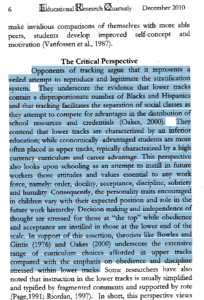When I start writing this MVP, I think the most interesting point is the curriculum integration. There are many benefits that curriculum integration can provide for students: engage in learning ideas that are meaningful to their lives; make significant connections between ideas they study and their lives; learn concepts and principles at a developmentally appropriate level; participate in democratic decision making that affects the daily classroom, etc. It also mentioned that students themselves can engage in the decision of making curriculum integration. “Student-designed is true CI as defined by ultimate curricular decision making by students ”(P195 Middle-Grade Research Journal Vol.6, No. 4, 2011). Then I have questions. What is the standard to exam students and courses when adding more different levels of people to decide the new curriculum? All Students have different and similar backgrounds. So how do we decide what types of students can join into designing curriculum?
The article also mentioned one interesting point is that “many classrooms have become less progressive in their curricular design than in previous decades”, which can refer to the traditional curricular designed classroom. I experienced the very traditional curricular designed classroom when I was studying in China. I think the traditional curricular designed has the explicit learning and teaching goals, and the benefits are more obvious reflected on the exam scores, which is the most direct way to see how is the students level and what percent of the knowledge he has mastered from class. And the traditional curricular designed classroom can definitely meet the high schools need because high school students have more exams for entering into higher education level.
